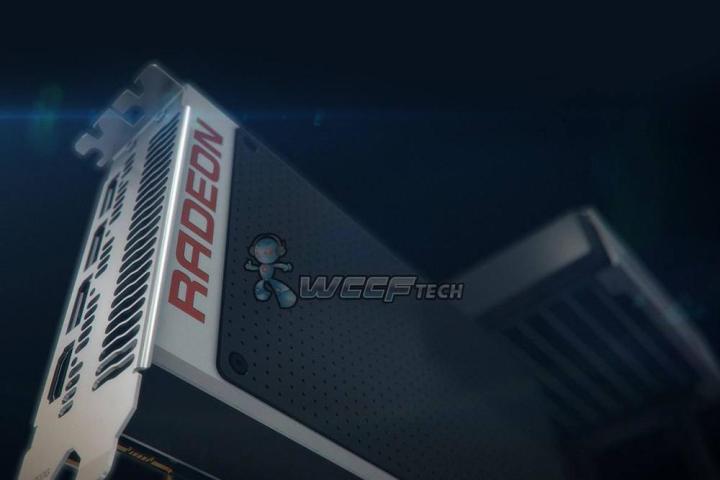
The first image shows a card that is noticeably shorter than previous generations — thanks to the use of high-bandwidth-memory chips, rather than traditional GDDR5 — with a shroud covering the entire PCB, leaving no gap free for air to circulate over. Instead, it looks like it’s being cooled by an internal water block, which is then connected to a single fan-sized radiator.
The second image gives us a look at the card from a much more neutral angle and show that the radiator will be separately mounted, if used (rather than building the card into an existing loop) and that there are twin water in/out connectors on the ‘top’ of the card.
The last image shows the Fiji GPU in its totally naked form. With this one we get a great view of the on-board memory chips located on the same die. However this picture has a different chip placement than WCFTech’s, so one or both could be fabricated.
However, for the sake of argument, let’s assume none of the images are fake at this point. With that in mind, we can determine that the pictured cards require just a single 8-pin PCIe connector and have no built-in DVI ports, but instead sport three full-sized display ports and a single HDMI.
Let’s hope there’s a HDMI-to-DVI converter in the box!
Editors' Recommendations
- AMD finally shares new RX 7900 XTX benchmarks, and it’s not all good news
- AMD’s 8 new Radeon GPUs might finally rival Nvidia in gaming laptops
- New leak shows that Gigabyte is releasing six RX 6600 XT cards
- Is a Mac Pro update coming soon? New leaks point to improved AMD Radeon graphics





